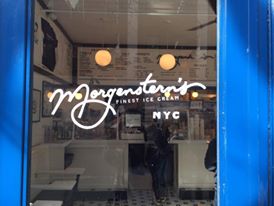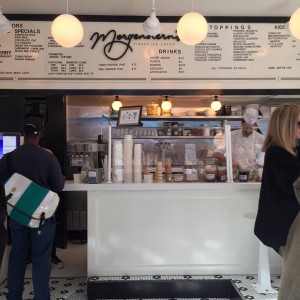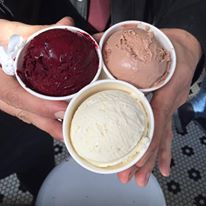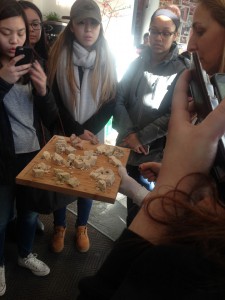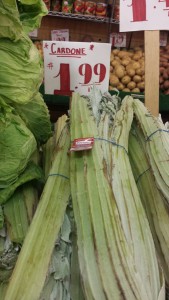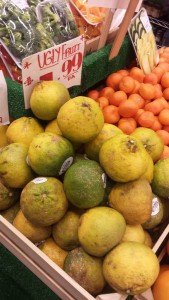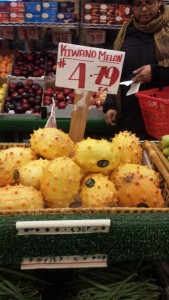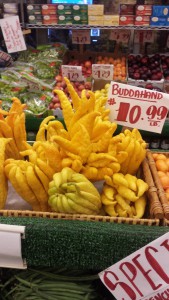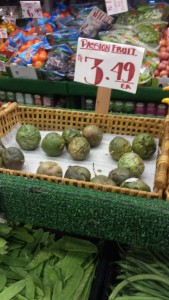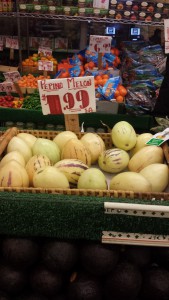Jackson Heights is like the Little India in the Queens neighborhood. You can definitely find authentic Indian food here.
One of the markets you must check out is the Patel Supermarket. It has all the Indian ingredients, spices, frozen foods, and all different kinds of rice.
Dera, Indian restaurant, has many varieties of desserts. Their desserts seem to be made fresh daily. It was not too sweet which did not make it overwhelming.
Category Archives: NYC Food Guide
Jackson Heights
Jackson Heights is a neighborhood located in Queens, just a short (30 minute) trip from Manhattan. It was developed in the first half of the 20th century by Queensboro Corporation, leading to a monotone layout of apartment buildings. What it lacks in some architecture (some buildings are beautiful, however) it more than makes up for it in cultural diversity, and in turn, food diversity. You can go down one block, and get columbian cheese donuts, or walk down another and do your food shopping at an Indian/Middle Eastern based supermarket. Not to mention dumplings from every nationality as well. The eclectic mix of people came from all over, but mainly from South Asia and Latin America. Recently, Jackson Heights was the only neighborhood from Queens to be listed on the gentrifying neighborhoods study. Hopefully this doesn’t deeply affect the diversity this Queens neighborhood holds.
Jackson Heights
Jackson Heights trip the first thing we tried was the Buñuelos which was a Colombian cheese bread. i had this many times before since i live a few blocks away from a Colombian bakery. The Buñuelos has a golden brown hard exterior with a fluffy yet somewhat spongy interior with a little cheese in it. This kind of bread would be my second favorite thing beside Empanadas.
Do you like MSG?
The thought of me going on this trip to MOFAD was to gain more knowledge of what food is really about. I was expecting a little more to what they had to offer since it was on media for a while. Overall, this place did gave me more understanding of what is Umami or MSG
I always thought that MSG. is only sold in Chinese take-out restaurant during my childhood, however, as I got into hands on experience with ingredients over the past years MSG is used in many type of food. For example, parmesan cheese, canned food, Cheetos, Doritos, and even Boar’s Head that is used for sandwiches. All of these taste good because of this unique flavor enhancing ingredients.
In 1908, a Japanese chemist (Kikunae Ikeda) in Germany identified glutamic acid as the chemical in a type of seaweed or kombu that gives traditional Japanese broth or dashi its savory flavor. This type of substance is commonly found in plants and animals, and even in our bodies. Salts formed from glutamic acid are called glutamates, and the most well-known one we know it as the monosodium glutamate or MSG.
MSG was used in many product during the World War II. Some might say the chemical could bring out the freshness and natural flavor in food. Food processors took that idea and incorporated MSG into their food that is canned, boxed, and even frozen. MSG became vital to the food industry and remains so to this day.
MOFAD
It was my second time to go to the Museum of Food And Drink in Williamsburg. This time i learned more from this visit than the first time because we had a tour guide where we learned that the museum talks about the chemicals that are in food and chemical reaction that happens when all are sense engage with food. They gave us a jelly bean to eat but we had to hold our nose as we chew. At first i only tasted sugar ,then the guide told us to release our nose and flavor came through which i was able to get the full experience of the jelly bean, i had orange. So through Smell and taste i was able to not only taste the sugar but i was able to taste the citrus orange flavor other than seeing the color that i got. i also learned that true definition of what natural and artificial means and the differences between them.
Di Palo
Di Palo’s has been over for many year now, and yet it is still attracting tons of tourists. Not only is this store located at Little Italy; also, it is filled with traditional products, and it is known for their authentic Italian groceries. Moreover, it is really close to my home, and usually I do not go there to shop for my Italian dish.
Pricing wise it may be more reasonable to tourists that is only visiting once or twice, but overall I think it is a little bit too much compare to other local Italian places that sell those products also. On the other hand, the history that was explain by one of the owner was very informative, and we all might feel that we are there while the man was telling his story. However, I did not felt I was welcome into the place at all, and it is more like you can help yourself. The smell and aroma was really intriguing similar to being in Italy.
We were not offered to get to taste, and that was very disappointing. Will I go back? …No, not a chance.
Morgenstern’s Finest Ice Cream
Morgenstern’s Finest Ice Cream is located at 2 Rivington Street at L.E.S (Lower East Side). It is a new American ice cream parlor and their focus is serving texture-driven small batches of ice cream that has a renewed attention to flavor and palate. The owner and founder of this ice cream parlor is Nicholas Morgenstern.
The three flavors that we tried during our culinary tourism tour was durian banana, salted chocolate, and black current. My favorite was the durian. Growing up, I ate durian so I am used to the taste and the smell. When you take a bite of the durian banana, you first taste the durian because it was very overwhelming and the after taste was banana. After a while of eating the durian banana, I didn’t taste the banana anymore and all I tasted was durian. The ice cream was soft and creamy. Next flavor was salted chocolate. I don’t like chocolate ice cream and to try it salted did not help me like it one bit. It was weird and it did not taste like chocolate. I liked the black current second; because once you take a bit of it, it was sour. I couldn’t taste the flavor really, because all I tasted was a sourness.
I’ve never been to Morgenstern’s and I’m glad we got to experience this place during our tour. I hope to return when I am around the LES area and try more of their “exotic” flavors.
Chelsea Market: Seed + Mill
During our tour around in Chelsea Market, Erik and I came across an interesting shop called “Seed + Mill.” Behind the glass were chunks of cake made out of grinded sesame seed called “Tahini.” Something I was not familiar with.
Tahini is a nutty, creamy paste made out of sesame seeds. It has a texture of powdery peanut butter. Tahini is a pastry paste used in the Middle Eastern. Countries in the Middle Eastern use this ingredient to prepare hummus served with pita bread. Behind the glass window were a couple of different flavored Tahini cakes. I tried a sample of cranberry tahini, pistachio but my favorite was the sea salt chocolate. The texture and taste of the Tahini, kind of reminded of a candy we have back in Mexico called Mazapan. The Mazapan is a soft powdery candy made out of almond paste and sugar but there is only one flavor to it. Next time, I return to Chelsea Market, I am bring back with me a pound of sea salt chocolate tahini.
Chelsea Market Tour
One place that caught me and Christley attention was the Manhattan Fruit Exchange. It is packed with tons of incredible ingredients that you might not find and regular supermarket. These items that we find were phenomenal crazy!
Like cardone, which is also called the artichoke thistle, and who know it is part of artichoke family?! Ugly Fruit? Look more like rotten that no one will want to buy for $2! Kiwano Melon which is cross between cucumber, zucchini, and kiwifruit, in addition, it tastes more like a banana after it is ripen. Buddahand is actually a distinct fruit in the citron family. Its skin can be use for candy in dessert. Passion fruit I use it to make bubble tea majority of the time because of the awesome smell it gives out, but the actual fruit itself is cute-small yet UGLY! Pepino melon in Spanish mean sweet cucumber, but in a eggplant family. Yes, WOW!
Great experience throughout the Chelsea Market tour!
Chelsea Markets- An Overview
The Chelsea Markets, like much of NYC, was originally a manufacturing plant; specifically for Nabisco. As rent in the city went up, manufacturing moved to cheaper locations and then the cities vices such as prostitution and drugs moved in. The area around the markets had quite a bad reputation, so the city decided to clean it up. Vendors and wholesale moved in, using the accessibility of the High Line to move products along the edge of the city. Once the High Line was closed, the markets slowed down. After the High Line’s restoration was finished and opened to the public, it became a destination making business boom for Chelsea Markets. Mo0re and more food places opened as well as manufactured there, until recently when production was moved elsewhere. Now Chelsea Markets is more of a higher end food court, toting artisanal as well as imported products for foodies of all kinds. Chelsea Markets is open from 7AM until 9PM. The A,C, and E trains run near from the 14th Street and 8th Ave stop.


